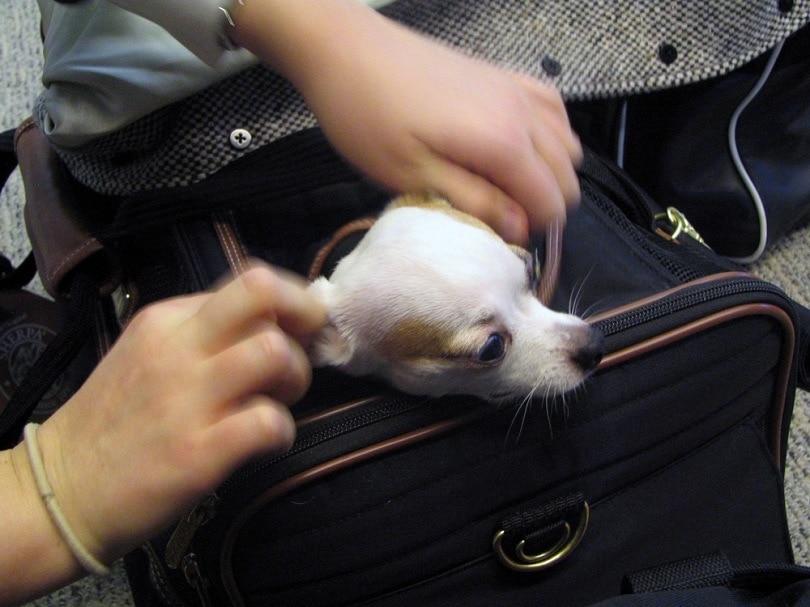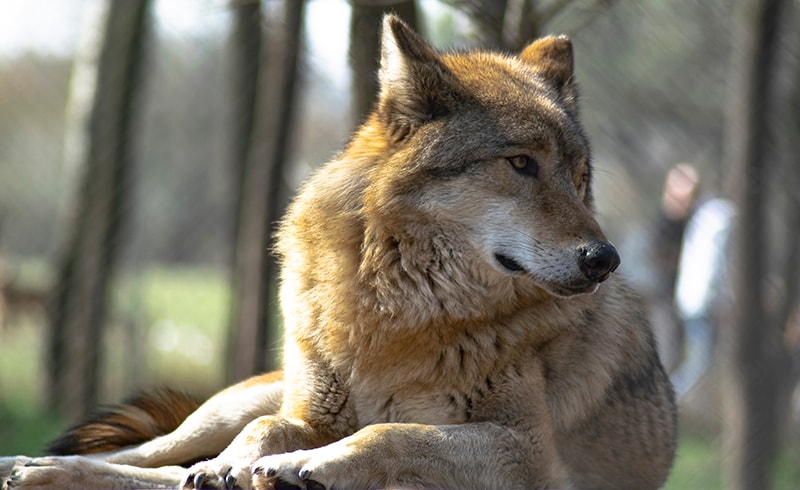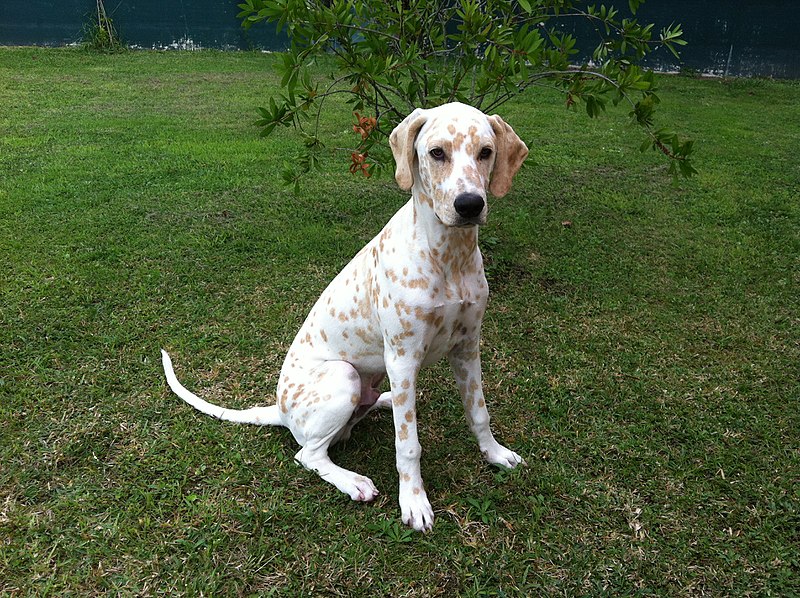Blue Brindle Cane Corso: Facts, Origin & History (With Pictures)
By Brooke Bundy
Updated on
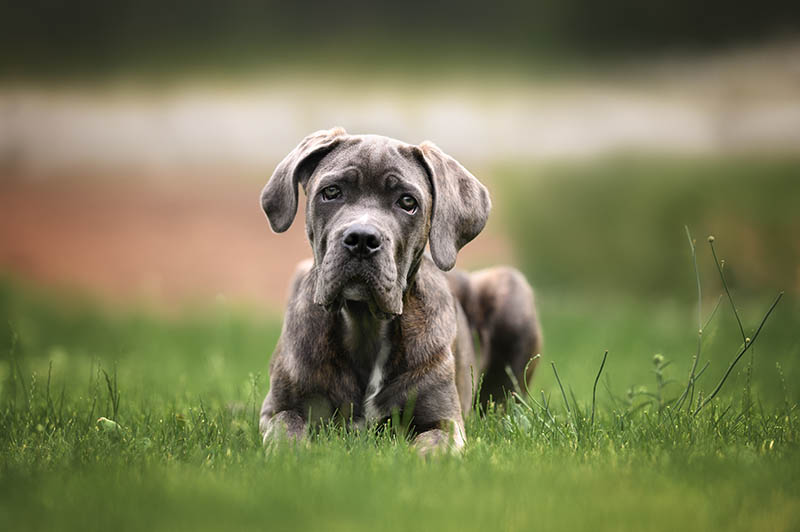
At first glance, you may mistake a Blue Brindle Cane Corso for an American Staffordshire Terrier. The Cane Corso is a bigger breed however, ranging between 24 and 28 inches at the shoulders, compared to the meager 14-to-16-inch stature of the American Staffordshire. And of course, no dog is truly blue like the cartoon characters. Rather, they have a soft gray color with “blue” shades resembling the coat of a Weimaraner. While a Blue Brindle Cane Corso isn’t rare, the color will be more difficult to find than solid black or gray. The good news is that there’s evidence based on studies that shows brindled or patterned breeds may have slightly longer average lifespans than their solid counterparts.
The Earliest Records of the Blue Brindle Cane Corso in History
Translated in Latin as, “guardian” or “protector,” the earliest Cane Corsos circled Roman arenas and kept guard over Italian villas for centuries. Descended from Mastiffs, they were bred to be gentle and loyal towards their people, while defending the property against strangers. They were also trained to hunt and kill wild boar. Used as dogs of war, the Cane Corso was quite a force to be reckoned with. Their bite reaches 700 PSI, which is tougher than a lion’s teeth. These dogs were also known for their fearless nature. Reportedly, Cane Corsos barreled into battle with blazing oil cans strapped to their backs.
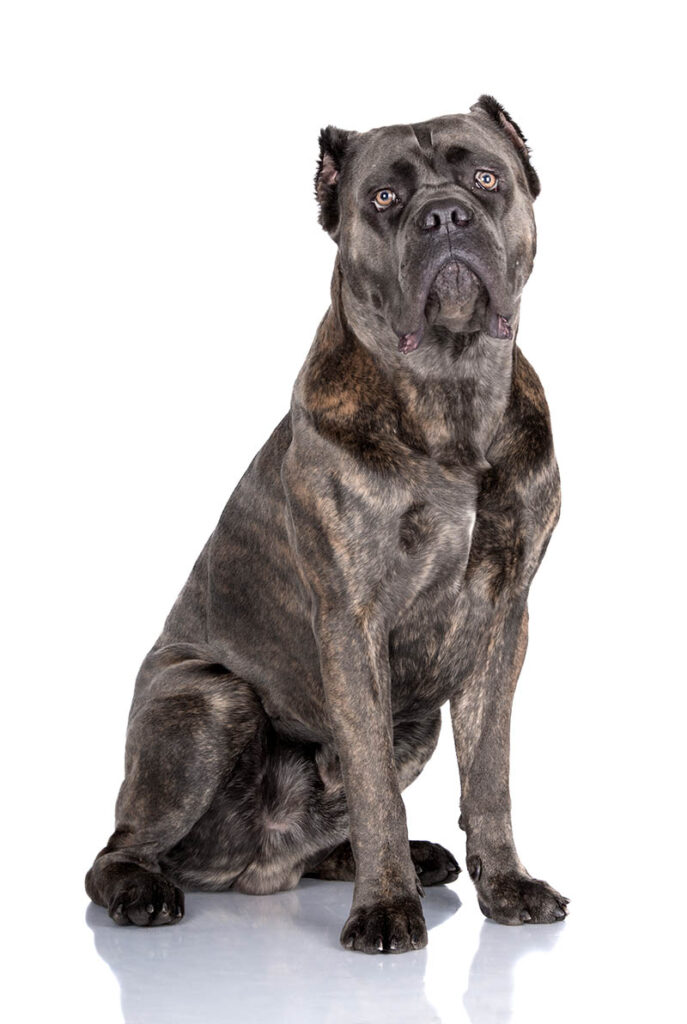
How the Blue Brindle Cane Corso Gained Popularity
After the fall of the Roman empire, the Cane Corso fell out of rank and moved to the countryside where they found employment for over a millennium guarding Italian courtyards. Nobles took great pleasure in going on hunts with these majestic dogs, and farmers used the Cane Corso to herd livestock.
Unfortunately, as the modern era approached, advancements in farming techniques put this breed out of a job. After the devastation of two world wars, the Cane Corso population had declined so steeply that they were almost extinct. Growing nostalgia for old Italy brewed in the hearts of the Italians who survived the war, and the breed was revived in the 1960s and 1970s.
Formal Recognition of the Blue Brindle Cane Corso
Even though the ancient breed has resided in Italy for well over a thousand years, the Cane Corso only recently embarked across the Atlantic. The first Cane Corso reached American soil in 1988, where it was promptly embraced by dog enthusiasts. In 2010 the AKC officially acknowledged the Cane Corso. They have been steadily rising to the top of the most popular dog breed list ever since, reaching #25 in 2020.
The Blue Brindle Cane Corso technically doesn’t exist by AKC breed standards. They only formally recognize black, fawn, gray, gray brindle, red, black brindle, and chestnut brindle. However, blue is just a fancy term dog breeders like to use for light gray, so technically speaking your Blue Brindle Cane Corso is included in the breed standard—just under a different name.
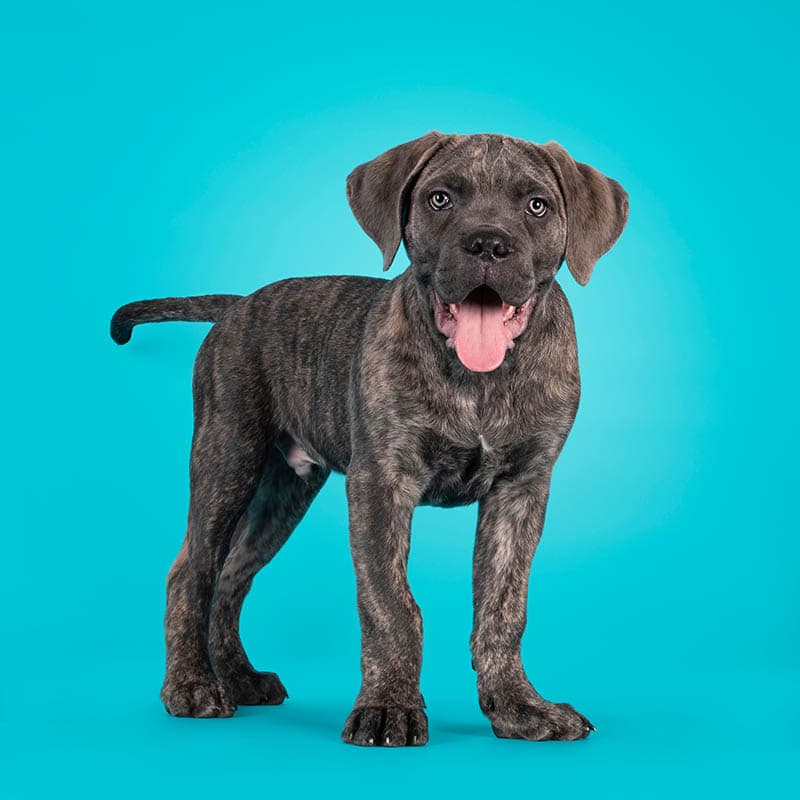
 Top 4 Unique Facts About the Cane Corso
Top 4 Unique Facts About the Cane Corso
1. At 700 PSI, the Cane Corso has the third strongest dog bite in the world
The American Bandogge and the Turkish Kangal are the only two dogs who challenge the amazing strength in the Cane Corso’s jaws. Even so, none of these dogs are considered aggressive breeds. They tend to be very mild mannered towards their families and may even be friendly with strangers if they’re given proper training at a young age.
2. The Cane Corso is actually a brachycephalic breed
When you think of snub-nosed breeds, you likely think of the petite Pug or famous Frenchie. However, the Cane Corso fits into this category. They aren’t as prone to respiratory distress as their smaller friends, but you do still have to use caution when exercising them in extreme temperatures. You should take them for a run during the early morning and twilight hours during summertime and aim for midday rendezvous while in the harshest months of winter.
3. Brindled dogs live longer
While the solid gray (or blue) Cane Corso only averages 9 years, the brindled gray Cane Corso has a 9.84-year life expectancy. The recessive genes that cause the gray color seem to negatively impact their lifespan, but the genes that cause the brindled pattern seem to offset this risk. Black brindle Cane Corsos live the longest, with 10.3 years as the average.
4. The Cane Corso has a waterproof coat
Their waterproof double coat sheds year-round, but not excessively. You’ll only need to brush them a couple of times a week to distribute the oils on their skin and control the shedding. They do “blow” their coat biannually where they’ll shed more than usual in preparation for the new fur. You’ll probably want to brush them more frequently during this time to keep a handle on the flying fluff.
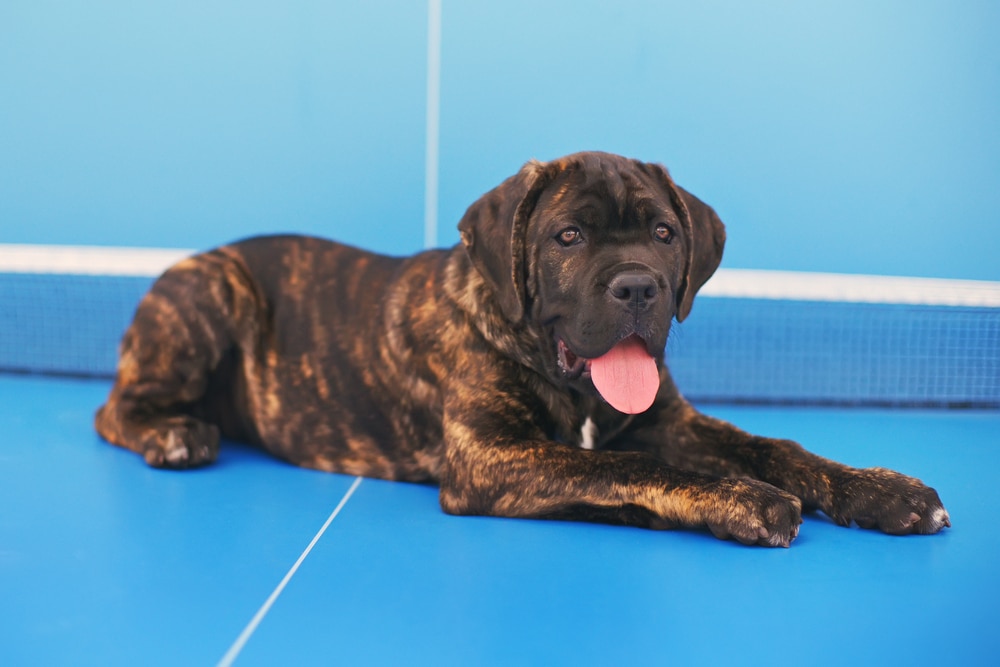
 Would a Blue Brindle Cane Corso Make a Good Pet?
Would a Blue Brindle Cane Corso Make a Good Pet?
The Cane Corso is a relatively low-maintenance dog. However, they do need space to run around, which makes them not an ideal choice for apartment living. The blue or gray brindled color isn’t as common as black, which might drive up the price even more. However, you might opt to search your local animal shelters and rescues first.
The Blue Brindle Cane Corso is generally a healthy dog, but you’ll still need to watch their diet and make sure they receive plenty of daily exercise to stay in shape. Plan on spending about an hour a day running your Cane Corso.
While you’ll only need to bathe your Cane Corso every few months, try to brush them at least twice a week, and more during their prime shedding seasons. Additionally, you’ll need to incorporate tooth-brushing into their daily routine, and trim their nails as needed.
Cane Corsos make great family dogs who are especially gentle with little children. However, you’ll need to take care to socialize them early to prevent them from being overly aggressive towards unfamiliar people.
Conclusion
At first glance, the Blue Brindle Cane Corso might seem like a rare find that’s not even included in the AKC breed standard. However, they’re actually Gray Brindle Cane Corso masquerading under a different name. While the Cane Corso is a great breed, they’re giant animals who need lots of space and social training. Make sure you’re prepared for the responsibility before you commit.
- Also see: Best Dog Shampoos – Reviews & Top Picks
Featured Image Credit: otsphoto, Shutterstock


